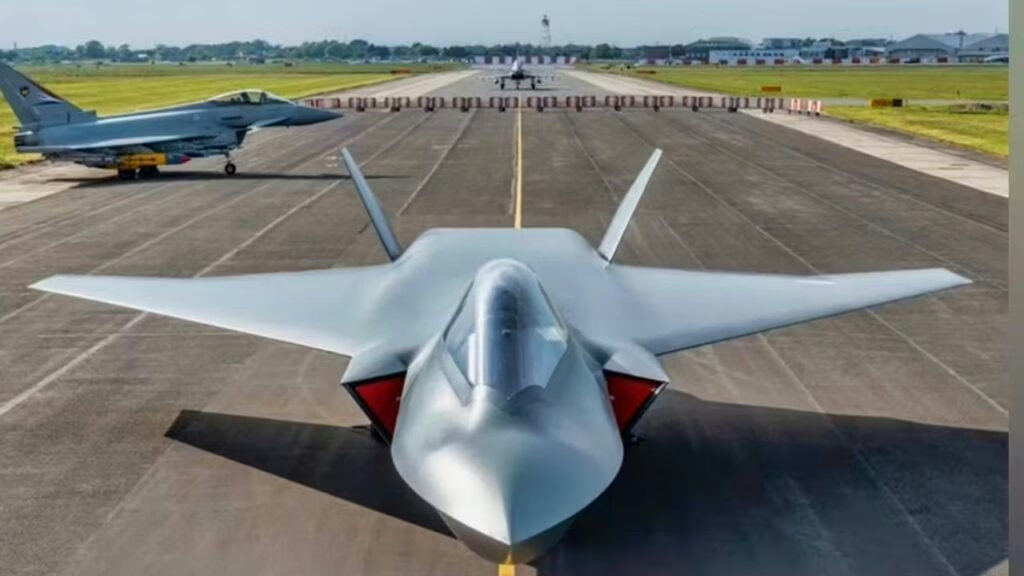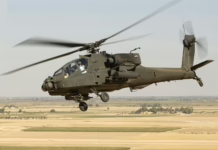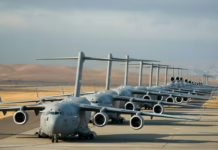Britain advances its most ambitious combat aircraft project since the 1980s, with international partners eyeing 2035 operational deployment amid growing global defense competition.
The United Kingdom is making significant progress on its sixth-generation fighter demonstrator ahead of a planned first flight before mid-2027, according to British defense officials and industry leaders speaking at a recent aerospace summit in London.
The supersonic platform, led by BAE Systems, represents Britain’s first domestically developed fighter demonstrator since the Eurofighter-precursor EAP program of the early 1980s. The aircraft will serve as a critical testing ground for technologies destined for the Global Combat Air Programme (GCAP), a joint project between Italy, Japan and the UK aimed at delivering an operational sixth-generation fighter by 2035.
Paul Wilde, BAE’s head of Tempest, told attendees at the Royal Aeronautical Society’s FCAS25 Summit on May 22 that the program has moved beyond its manufacturing peak. When the demonstrator was announced at the Farnborough air show last July, “more than half of the aircraft’s weight, including the fuselage and wings” was already in assembly or build, Wilde said.
The fighter will be powered by two Eurojet EJ200 engines from the Eurofighter Typhoon and has accumulated significant testing hours in simulation. Fourteen test pilots have logged more than 300 combined hours “flying” the demonstrator in a simulator at BAE’s Warton facility in Lancashire, according to Wilde.
“That’s a really significant amount,” Wilde noted, describing the early virtual flight experience as proving the aircraft handles like “very much a combat air-type aircraft.”
One project pilot involved in the testing highlighted a key design challenge for sixth-generation platforms: “Sixth-generation platforms are considerably bigger [than current types]. They are not small, agile fighters any more, and yet we are able to generate through the very clever use of control laws something that is still very familiar.”
The demonstrator program focuses on de-risking technologies and validating design concepts before their implementation in the full GCAP program. Examples include supply chain innovations, assembly techniques and increased use of additive manufacturing technology in major aircraft structures.
“It’s an opportunity for us to go and develop a number of capabilities and to look at how we re-brigade some of the UK skills, and really try to push the de-risking element in support of the core GCAP programme,” Wilde explained.
A Ministry of Defence engineering official overseeing the program emphasized the value of early problem identification: “It gives us an opportunity to get started early, and if things go wrong, we can flush those out and not find out on the core [GCAP] platform.”
The flight-test program details remain under development, though officials confirmed certain objectives. Wilde said validation of aerodynamic performance around the jet’s engine intakes and serpentine ducting represents a key testing priority, as these features enable the aircraft’s low observable design characteristics.
“We know some of the testing that we are going to do,” Wilde said. “We are getting into more conversation about what more do we want to go and do. But the bigger programme hasn’t yet worked out what it needs us to go and fix and investigate.”
The GCAP partnership has evolved significantly since its inception, according to Giandomenico Taricco, director commercial and corporate for the GCAP International Government Organisation (GIGO). The management body, approved last December alongside terms for an industrial joint venture between national champions BAE, Leonardo and Mitsubishi Heavy Industries, operates from Reading, England.
“GCAP is moving from a three-nation discussion to a single programme,” Taricco said. “We are trying to grow very quickly — we receive new people from the three nations almost every day. Our aim is to become relevant very soon, and to be very effective.”
The program operates within a broader competitive landscape that includes the Future Combat Air System being developed by France, Germany and Spain, as well as the U.S. Air Force’s developmental Boeing F-47. According to program officials, all three efforts are reaching similar conclusions about sixth-generation fighter requirements.
The UK’s fighter development occurs as the Ministry of Defence prepares to release its Strategic Defence Review, which will address the GCAP program alongside other combat air activities including the in-service Lockheed Martin F-35 and Typhoon fleets.
The future fighter is designed to operate within a broader system of systems that will include unmanned autonomous collaborative platforms and an underpinning data network. “From a requirements space, it’s a vehicle for the military capability to be in a place it needs to be,” one project pilot noted.

Key Takeaways
- The UK’s sixth-generation fighter demonstrator is progressing toward first flight before mid-2027, with manufacturing moving past its peak phase and extensive simulation testing completed.
- The program serves as a technology demonstrator for the Global Combat Air Programme, a joint UK-Italy-Japan effort targeting operational deployment by 2035.
- Fourteen test pilots have accumulated over 300 combined hours in simulator testing, validating the aircraft’s handling characteristics despite its larger size compared to current fighter generations.
- The demonstrator will test critical technologies including low-observable design features, advanced manufacturing techniques, and system integration capabilities for the broader GCAP program.
- International management structures are rapidly expanding, with the GCAP International Government Organisation growing daily as the program transitions from planning to active development.







